How To Survive In The Woods
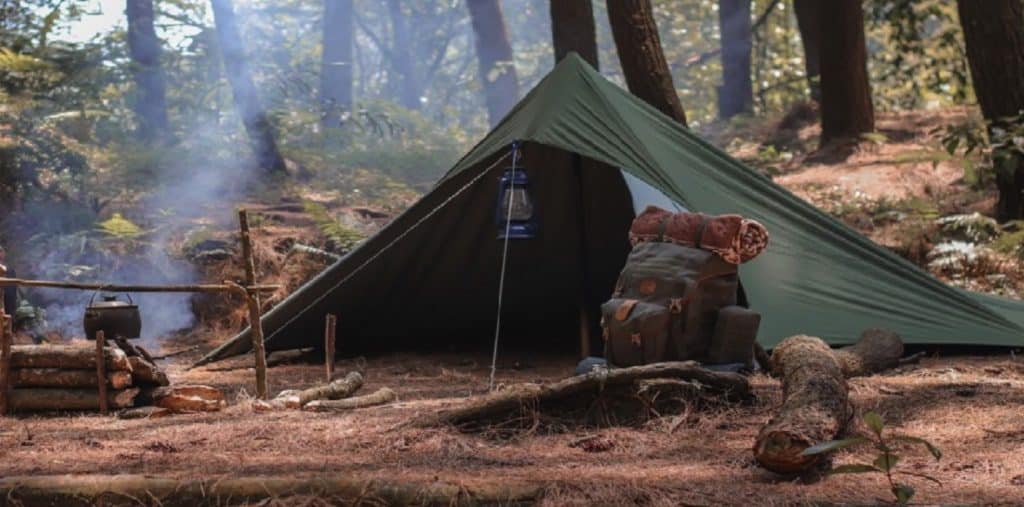
-
Save
Share this article: Bugoutbill.com is independent – we research, test, and rate the top products to help you make the right buying choice. We sometimes use affiliate links and may receive a small commission on your purchase. Learn more…
A perfect existence has always been to live in a place surrounded by trees and nature.
Indeed! It is!
The air will be fresher, the fruits will be tastier if you find them, and the calm and peace of the surroundings will be something to long for.
But how does a city man make a forest their home?
If you want to know how to survive in the woods, the first rule to remember is always to be prepared.
You certainly don’t want to be caught short on supplies.
So…
Bring a fire starter, knife, water, first-aid kit, water purification tablets, and a rain jacket with you on any “short walk” in the woods.
Check this great pocket knife you can bring anywhere you want.
Even if you don’t intend to venture into the bush, you should have survival gear on hand.
What we recommend is that you…
If you break down on a road, keep an auto emergency kit in your vehicle. If you need to flee, keep a bug-out bag with you. Check this survival kit!
Here…
We’ll concentrate on how to survive in the woods by carefully preparing and selecting the necessary equipment for survival situations in the wilderness.
Table Of Contents
Table of Contents
Recent posts
Categories
Finding Drinking Water
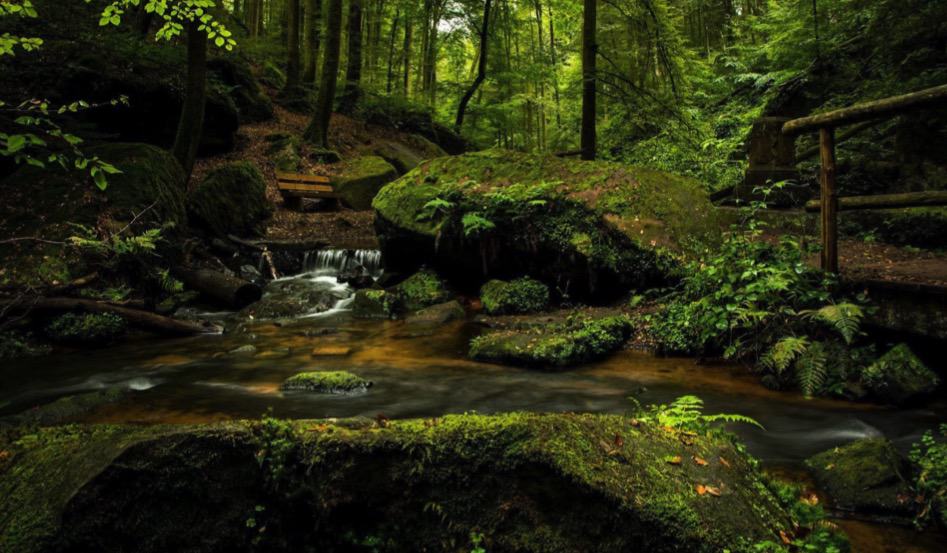
-
Save
Water is the most important thing you’ll need to survive in the wild. You can only go three days without water before you die, but you’ll be severely dehydrated much before that time.
Remember to purify water from lakes, streams, and rivers before drinking it, even if it appears to be clean!
Search For A Source of Fresh Water
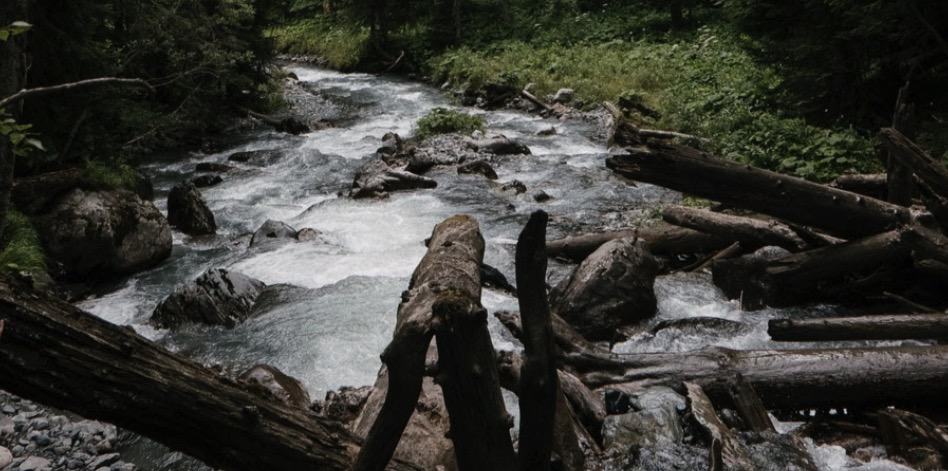
-
Save
The first essential you’ll need to stay alive in the woods is drinkable water. Recognize the signs of freshwater resources nearby, such as vegetation that indicates the presence of water, low-lying areas where wild animal tracks.
However…
While finding water is critical for survival situations, be mindful that some water sources may not be safe.
So…
Purify all water you’ll drink as much as possible before using it.
And here are some pointers and reminders to help you find a source of freshwater:
First…
Although freshwater springs are generally cleaner water sources, they can also be contaminated by minerals or germs.
So, learn to be careful.
Second…
Insects such as mosquitoes and flies indicate the existence of water.
Yes! You read that correctly.
As a result, as a survivalist, you must be observant.
Collect Rainwater To Drink
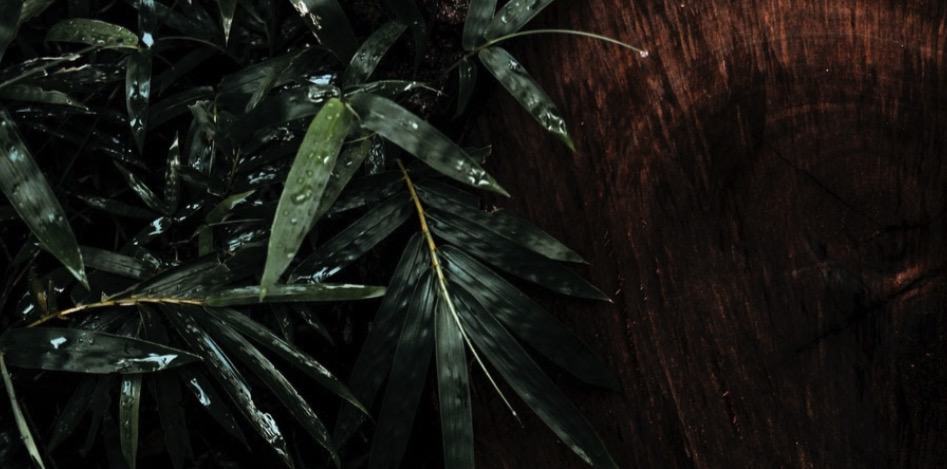
-
Save
Collect some rainwater to drink if you want to be sure your water is safe.
Rainwater is one of the most convenient and safe ways to stay hydrated outdoors. If it begins to rain, place any containers you have outside to collect water.
Rainwater collection can be accomplished in two ways.
First:
Make use of any containers you have on hand.
Second:
Tie the corners of a poncho or tarp over trees a few feet off the ground, form a hollow with a small rock in the center, and allow the water to gather.
Reminder:
Allowing water to sit in a container or tarp for an extended period can cause it to stagnate, allowing bacteria to pollute it.

-
Save
Take an absorbent cloth, such as a cotton t-shirt, lightweight towel, or rag, and wipe it over grass, stones, or other items to collect dew.
And then…
To capture the dew, lay the cloth on top of the grass in a clearing or a meadow with tall grasses. Wring out the water and collect it in a container after moving the cloth around in the grass until it’s soaked.
Reminder:
Make sure you aren’t collecting dew from dangerous plants. Grasses are the most secure option.
Dig A Hole To Find Freshwater
The majority of freshwater is located underground in aquifers and as soil moisture.
Start digging!
Dig a huge hole a few feet deep anywhere you perceive moisture on the ground or green foliage, and water will most likely seep in.
Apart from that…
Dig down with a shovel or a strong stick until you find water. Make the hole large enough for you to scoop water out of it effortlessly.
Melt Snow or Ice If You Can Find Some
Because germs rarely survive in clear white snow meltwater, it is typically considered safe to drink.
And here’s how it works…
If snow is your only choice for rehydrating your body, it should be melted before consuming it to avoid severe dehydration and hypothermia. It’s also better to avoid the snow that isn’t completely white because it could be contaminated with bacteria that make you sicker than dehydration.
With this in mind…
Collect ice or snow and wrap it in a thick bandana or t-shirt. Suspend the snow above a fire with thick branches. As the snow or ice melts, it will seep into the cloth. To capture the falling water, use a large cup or container.
Purify Any Water That You Find
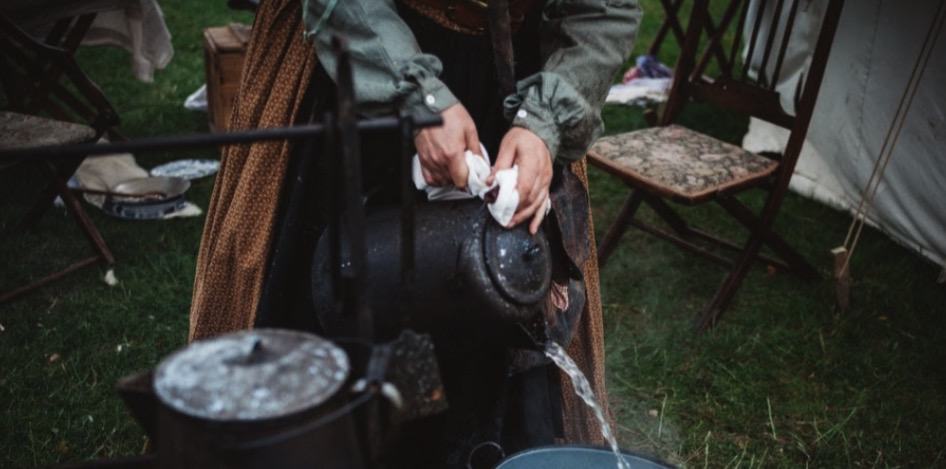
-
Save
Water purification serves several purposes, one of which is to produce safe drinking water. It’s critical to filter any water you gather, including rainwater, dew, ice, or snow, to avoid ingesting bacteria that might make you sick or even kill you.
Contaminants such as suspended particles, parasites, bacteria, algae, viruses, and fungi are reduced during the purification process.
We understand your query…
How do you go about doing it?
To remove large particles from the water, strain it through a piece of cloth or clothes, then boil it for 10 minutes to destroy any impurities.
If you don’t have a vessel in which to boil water…
You may purify a clear plastic bag or container by filling it with water, sealing the lid, and placing it on its side in direct sunlight for 6 hours.
Related: How To Build A Faraday Cage
Building a Shelter
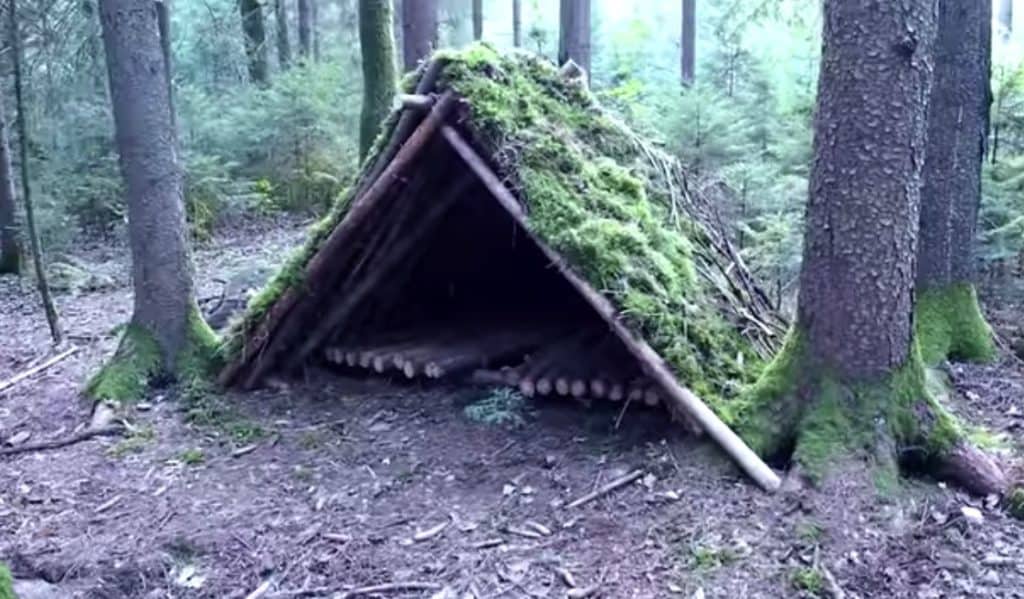
-
Save
It’s actually quite simple to build a survival shelter in the woods. To defend yourself from the elements, you’ll need protection. By trapping your body heat and keeping you stay warm, you’ll need a well-built survival shelter.
Some wild creatures are more likely to attack you if you are out in the open. Therefore a shelter can help protect you.
Remember to finish your shelter before the sunsets!
So…
Whether you need an insulated shelter to make you stay warm in the winter or a shade shelter to keep you cool in the summer, we have you covered.
As a result…
Everyone should know how to construct a survival shelter. Remember to practice so you’ll be ready if you ever need to use this survival skill!
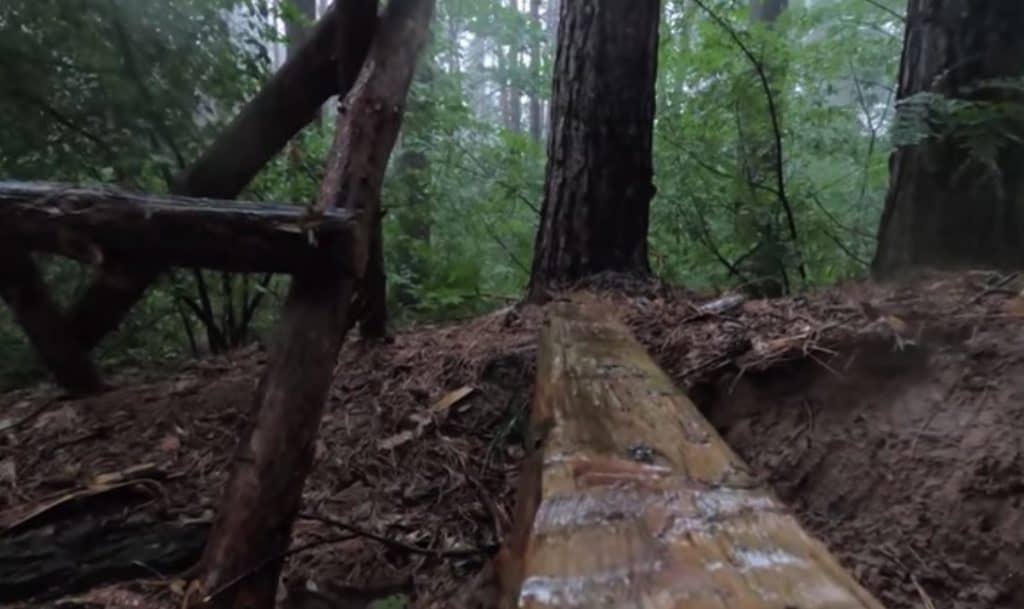
-
Save
Search For A Dry, Flat Area Between 2 Trees With Splits In Their Trunks
All you need to do is select two trees about six feet apart. Placing a pole between the two trees and securing it with vine, shoelaces, twine, or rope is a good idea.
Don’t forget to…
Remove rocks and trash from the area between the trees to make it more pleasant to lie on.
Find A Branch 10 Feet (3.0 m) Long And 3–6 Inches (7.6–15.2 cm) Thick
You’ll need a support beam to build your shelter, so look for a robust tree branch that isn’t rotting. The better the branch is for building the structure of your shelter, the straighter it will be.
Insert One End of The Branch Into The Split of 1 of The Trees
Place one end of the branch as a support column where the tree splits and produces a “V” shape. If the tree doesn’t split, use a log that terminates in a “V” shape and lean-to and against a tree to support the branch.
Place The Other End of The Branch Into The Split of The Other Tree
Placing the other end of the main branch into a nearby tree’s split may create a horizontal frame. Shake the branch a little to make sure it’s firmly in place.
Lean Branches Against The Main Branch To Form The Structure of Your Shelter
Gather a clump of branches long enough to be supported up against your shelter’s main branch. Consider making ribs out of the branches, and keep them as close together as possible.
Lay Twigs And Leaves Over The Branches to Form A Layer of Insulation
After you’ve built the structure of your shelter, add a layer of insulation with smaller, leafy branches, brush, or leaves to assist retain heat and providing protection from the wind and rain. To make a thick covering, arrange the leaves and little branches over the frame in decreasing size order.
Use Leaves To Make A Bed Inside of The Shelter
Find soft stuff, such as leaves or pine needles, and arrange it on the ground inside your shelter to make it as pleasant as possible to make it your sleeping bag. Before putting the material in your shelter, inspect it for insects or spiders.
Even in warmer weather, lying flat on your back on the ground can cause your body temperature to drop to dangerously low levels.
Related: How To Keep A Fire Going
Finding Food
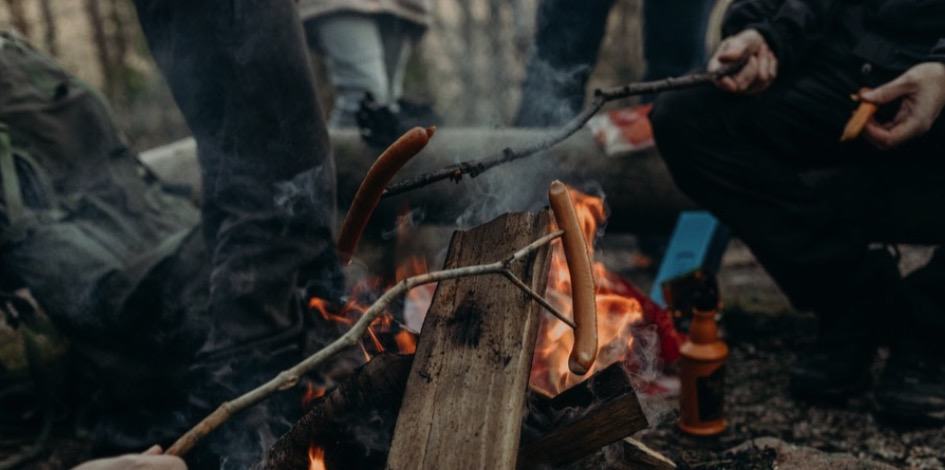
-
Save
Obtaining any type of sustenance within the first few days is critical in a wilderness survival situation.
Otherwise…
You won’t have the energy to do equally critical duties like shelter construction or water collection.
Therefore…
I’ve put up a list of six techniques that will assist you in obtaining food in the wild.
Flip Over Logs To Search For Insects That You Can Eat
Don’t be hesitant to catch insects in the wild. Despite their strange and occasionally scary look, bugs are one of the most remarkable providers of critical nutritional needs.
In addition to that…
Insects are quick to find and kill, and they’re high in protein and lipids, which will help you live in the wilderness. Look for ants, beetles, worms, and grubs beneath rotting logs, and look for worms in the dirt as well. Most insects are OK to consume raw, but ticks, spiders, and flies should be avoided.
Pick Wild Edible Berries To Eat
In the woods, you can find a variety of edible plants, food, berries, and fruits. Knowing some essential characteristics of these plants will help you determine which are dangerous and edible.
So here’s what you need to do…
Local knowledge about the many flowers found in the designated region and asking which ones to avoid can be beneficial in the long term.
Look For Edible Mushrooms In The Woods, If You Are Trained
Look for mushrooms that have brown or tan gills. While certain mushrooms with white gills are edible, white gills are almost invariably found in the Amanitas mushroom family, which is the most lethal among the poisonous plants.
So…
Choose mushrooms that don’t have any red on the cap or stem. Mushrooms with white, tan, or brown caps and stems are the best.
Forage For Edible Wild Plants
There are many edible wild plants in the woods, but you must ensure that you harvest non-toxic species.
Look for dandelion leaves, chickweed, wood sorrel green leaves, and primrose and wild violet sensitive young blossoms.
Reminder:
Don’t consume anything if you’re not sure what you’re picking.
Built A Snare If You Have String or Wire
A trap is a safe and simple method of catching small wildlife such as rabbits and squirrels. Make a loop at one end of a piece of wire or string about 2.5 feet (0.76 m) long and tie a slip knot.
And then…
To make a huge circle, push the opposite end of the thread or wire through the slip knot. Hang the snare’s circle over a forest route or a footpath.
Avoid Hunting Large Animals
You need to be as healthy as possible to achieve wilderness survival. While deer and wild pigs provide nutritious meat, they can also injure you if you do not have the proper firearm to gently dispatch the wild animals.
So…
Even if you can kill a deer or a pig, you might not have the instruments you need to preserve the vast amount of flesh the once-living animal has produced.
What we recommend is…
Small wildlife and insects are safer to hunt and gather, and they can give you enough sustenance to make it through the night in the woods.
Starting a Fire
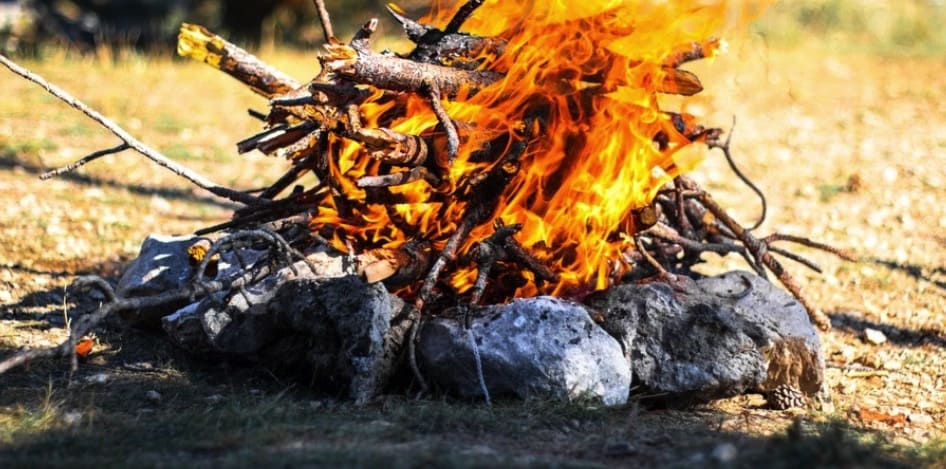
-
Save
Campers and hikers typically rely on lighters and matches to start a fire. The disadvantage of using these instruments is that they are prone to getting wet, running out of gas, or failing to function when you need them most.
Crucial survival skills are the ability to light a flame without the use of matches or a lighter.
Because…
You never know when you’ll be faced with a circumstance that necessitates the use of fire. Even if you don’t plan on leaving civilization on your road trip, learning how to build a fire the old-fashioned method is a terrific party trick to wow anybody you take camping with you.
Most importantly…
Fires can be used to boil water, cook, staying warm, and signal for assistance. Start by building a fire pit.
Find Small, Dry Material To Use As Tinder
Look for dead stem bark on tulip poplar, cedar, juniper, mulberry, and certain oak trunks and branches.
Inner bark tinder can be found in plants that are used for cordage, such as milkweed, dogbane, stinging nettle, and fireweed.
Gather Small Twigs And Branches To Use For Kindling
Kindling should be made of a substance that will easily catch fire when lit. Kindling can be made from dry sticks, branches, a fallen tree, or tree bark.
Collect Larger Logs For Fuel
Before you light your fire…
You’ll need a lot more fuel to keep things going. Look for firewood in the area and pile it near where you want to start your fire so you can add extra fuel as needed.
Fresh or green wood will take longer to catch, so look for dry, brittle wood.
Build A Teepee Structure With The Tinder And Kindling
Remove any leaves, branches, or other anything that could catch fire and distribute it to a dry, even area. By bundling your tinder and arranging the kindling around it, you may make a teepee construction.
Then…
Lean your larger fuel logs towards each other to create a frame for your tinder and kindling.
Create A Fire Plough To Ignite The Kindling And Start The Fire
If you’re seeking some of the most dependable and simple ways to ignite a fire in any situation, look no further. The fire plough method (also known as fire plow) is the oldest method of making fire.
Apart from that…
Creating enough friction to spark a fire by rubbing one stick against another. A fire plough is simply a modified version of this time-tested fundamental fire-starting technique.
Conclusion: How To Survive In The Woods
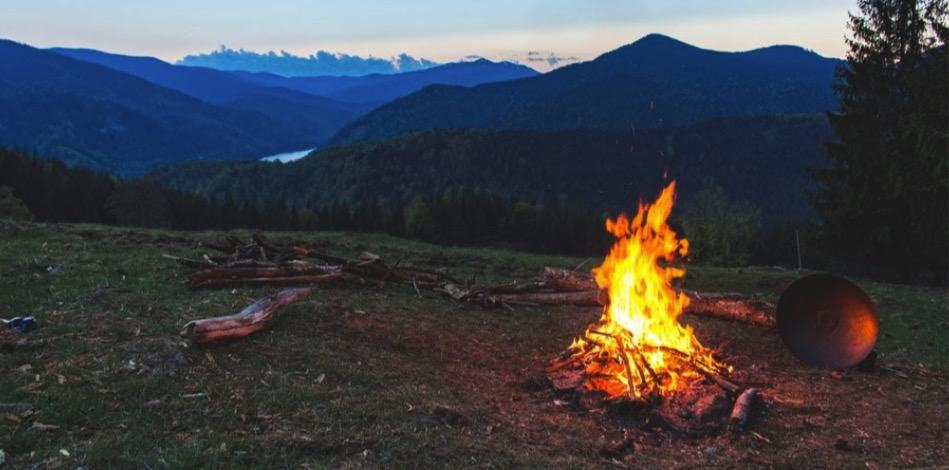
-
Save
While it is possible to survive in the wilderness with nothing, you will always be better off with some planning.
To sum up…
Being efficient and opportunistic with survival food is the key to getting the most out of it.
As usual…
The best survival advice is to stay away from real-life survival circumstances. When trekking, be prepared, but always be mindful of your surroundings. Make sure folks know where you’re heading.
Surviving for a year in the wild isn’t completely out of the question. Food, shelter, and water are all you need to keep it going. It might be exhilarating if you do your homework!
Also, make sure you don’t get lost!
Have fun and stay careful out there!
Similiar Posts
Community Cuisine: MREs and Grassroots Food Movement Engagement
Interested in the connection between community cuisine, MREs, and the grassroots food movement? This article
The Future of Food: MREs and Their Contribution to Systemic Change
Meal, Ready-to-Eat (MRE) is a convenient and portable food option that has been gaining popularity
On the Frontlines of Food Change: MREs in Food System Transformation
In a context where food system transformation is a prominent topic of discussion concerning sustainability

-
Save
About Author
Bug Out Bill is an adventurer and survivor through and through. From the time he was just a little boy (Bug Out Willie) running and jumping through the backwoods of the rocky mountains in Colorado, to the man he is today. Backpacking through South America, scaling two 26,000+ ft peaks, sailing across the Mediterranean, surviving a near death 50 foot fall with very little food while waiting 6 days to be rescued in the wilderness, and everything in between. No wonder he wants to Bug Out, hahaha. BO Bill is truly a passionate outdoorsman when it comes to living life to the fullest with no boundaries. The way we were meant to live and survive. He shares that passion here with you in his writing and sharing. We hope you enjoy your stay at the Bug Out Bill website. . Now Bug Out!
Bugout Bill -
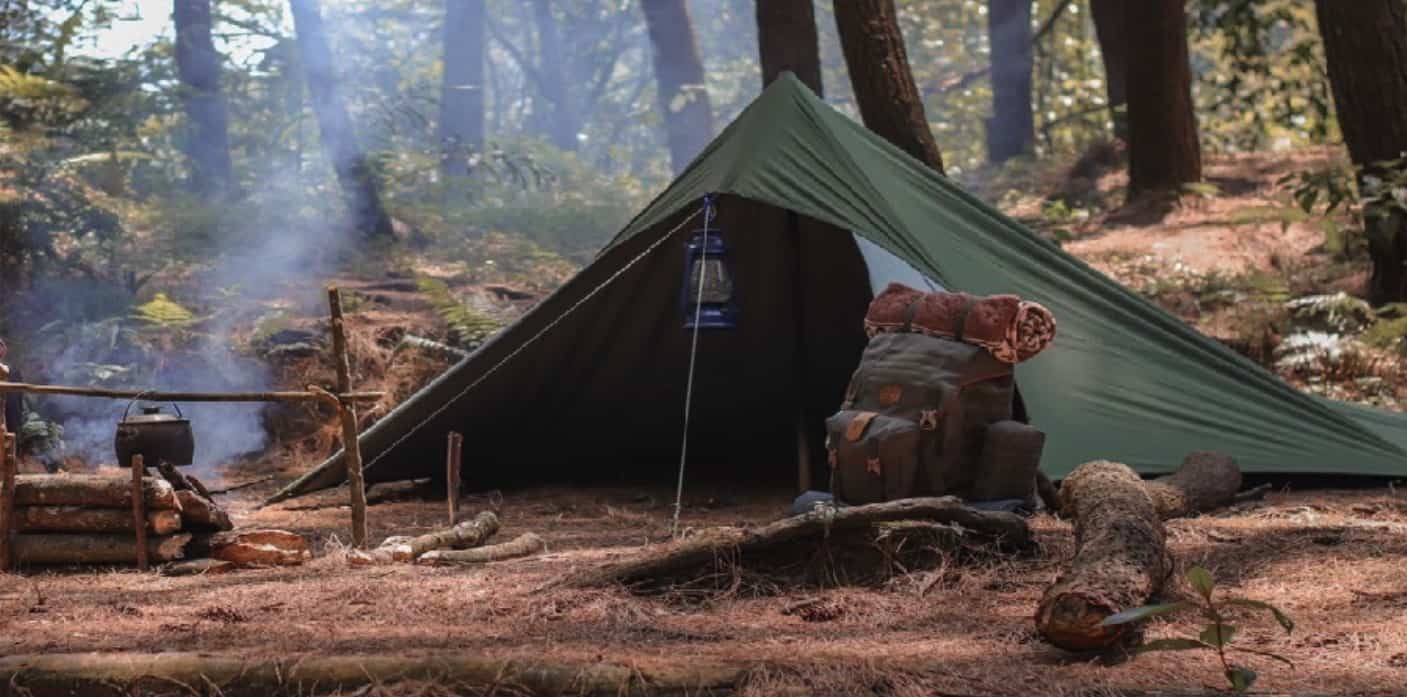
-
Save

